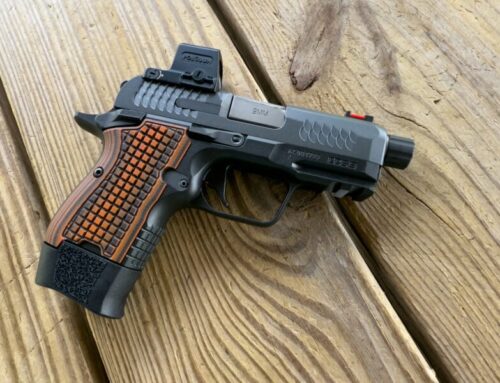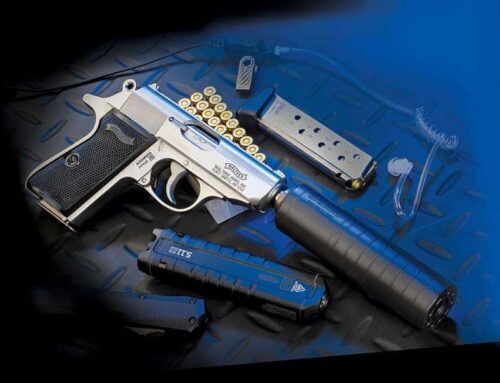
Sig Sauer’s 230-grain .45 ACP V-Crown ammo.
There’s a lot to be said for finishing the job.
When it comes to 45 ACP expansion performance, and I’m talking about the heavy and comparatively slow 230-grain varieties, reliable expansion can be an iffy thing. What starts as a projectile capable of leveling a city block often ends with some percentage of unexpanded slow but heavy bullets. Whether or not that matters is a whole different issue, as the projectile is almost a half-inch in diameter to start with.
Over the past several years, I’ve tested a pretty wide variety of 230-grain .45 ACP ammo and have found inconsistent results when it comes to expansion. Penetration is never an issue and I certainly have no desire to be shot by a .45. Then again, if a box of premium self-defense ammo is marketed as expanding hollow point, then it ought to do that in normal conditions.
Shooting most any of these loads into bare ballistic gelatin or water jugs will almost always result in picture-perfect expansion success. That’s the best possible environment for bullet expansion. Adding in a layer of cloth, or the FBI testing standard four-layer heavy fabric, makes things interesting real quick. It’s not at all unusual to fire five .45 heavies into this test scenario and see one or two expand properly, another start to expand, and the last two move straight on through like their full metal jacket cousins.
Before anyone gets all cranky, I’m not knocking 45 ACP in any way, shape, or form. I like it. I carry it. I’m a believer. All I’m observing is the very real challenge that its combination of velocity and mass presents to ammunition manufacturers. Hollow point expansion relies on fluid pressure to open up the bullet’s cavity. More velocity means more fluid pressure. If you could fire a Snuggie fast enough into ballistic gel, it might expand too.
The .45 is at the lowest end of the pistol velocity spectrum, moving along at somewhere between 800 and 950 feet per second for most 230-grain loads. I believe that’s why finding that perfect combination of penetration and expansion reliability is so difficult. If the bullet is designed to expand too easily, at too low a velocity, it won’t penetrate to the desired depth. Once again, whether expansion reliability matters with the big and heavy slug is a separate discussion.
I mention this to provide some background for my recent test of Sig Sauer’s Elite Performance .45 ACP V-Crown self-defense ammunition. To be honest, I’ve been putting this off for a while and the boxes have been collecting a bit of dust in my man cave. It’s just not as fun testing stuff that you think may not have a very good chance of working as you want it to, and given my history with heavier .45 rounds, I had my suspicions.
Well, I finally got around to checking it out, testing for velocity with four different guns, accuracy with two, and penetration and expansion with one. Here’s what I found.
Velocity
I set up my now perforated Shooting Chrony Beta Master Chronograph 15 feet down range and proceeded to fire strings with four different guns. Averaging out the results for each gun, here’s what I found.

* As to why the shorter barrel gun clocked more accuracy, all I can suggest is interference by aliens, or perhaps Thetan’s, upset with my shooting that day. I shot the guns on the same day, within minutes of each other.
** For this one, I added an AAC TiRant 45 Modular suppressor. Because fun.







Leave A Comment